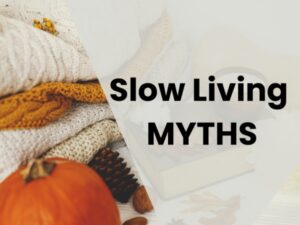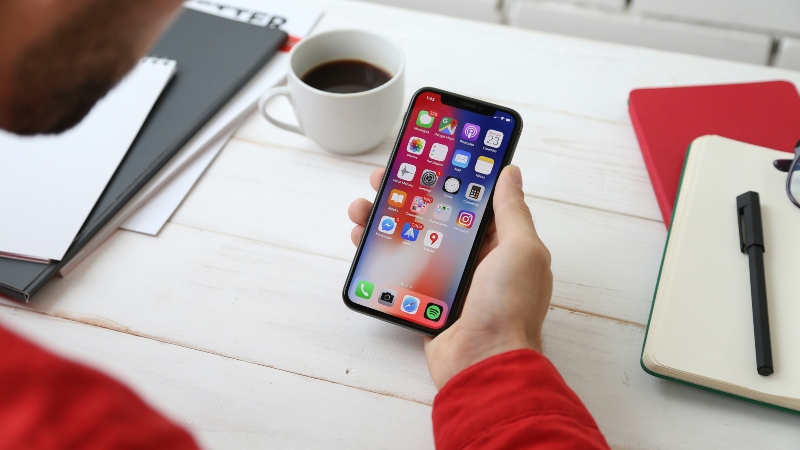Slow living is a kind of lifestyle that promotes a more intentional, mindful, and balanced approach to life.
It focuses on quality rather than quantity.
We live in a society that encourages busyness* and speed, we’ve even forgotten how to savor moments.
Here’s a breakdown of what slow living entails:
a) Intentionality
You can’t practice slow living without intentionality. That’s the core of slow living.
It means taking time to ask yourself what really matters to you; be it in your career, your relationships, and even personal habits.
You identify those things and direct your time and energy to them.
When that is not in alignment, external pressures will always distract you.
When you establish what matters to you, it’s easy to make conscious decisions on those things.
b) Pace of Life
Before I understood the concept of slow living, I was convinced it meant doing things at a snail’s pace.
On the contrary, it’s about doing things at a pace that allows you to experience them fully.
I’m almost sure that someone reading this might be thinking slow living means being unproductive, but you will be surprised.
Practically speaking, taking more time for self-care, simplifying your schedule, or reducing multitasking so you can concentrate on one task at a time, are some ways to achieve slow living.
c) Mindfulness
Slow living is closely tied to mindfulness.
In whatever you do, whether you’re eating, working, or spending time with loved ones, you learn to be present in the moment.
Mindfulness encourages you to create a sense of calm and reduce stress as well.
d) Work-Life Balance
This is one of my all-time favorite advantages of slow living.
In today’s fast-paced world, where hustle culture is common, slow living offers a better work-life balance.
It encourages creating clear boundaries between work and personal time, giving you the chance to rest and recharge.
This leads to a more satisfying life, where work helps you reach your goals without taking over who you are.
e) Well-being

Slow living is about focusing on your mental, emotional, and physical well-being.
It includes taking care of yourself with habits that support both your body and mind, like exercising regularly, eating healthy, getting enough sleep, and practicing things like meditation or journaling.
The aim is to build a life that feels balanced, happy, and peaceful.
f) Connection with Others
Slow living focuses on building stronger, more meaningful relationships.
Whether you’re spending time with family, and friends, or creating a sense of community, it encourages developing real connections instead of shallow or purely business-like interactions.
g) Enjoying Simplicity
Living slowly is about enjoying the simple things in life—like having a peaceful cup of tea, taking a walk outside, or having a good conversation.
It’s realizing that happiness often comes from these small moments, instead of always chasing bigger or more exciting experiences.
I bet you’ve heard one of the following misconceptions about slow living.
*They are in no particular order)
Misconception 1: “Slow living is lazy or unproductive.”
A common misunderstanding about slow living is thinking it means doing less or avoiding work.
In truth, slow living isn’t about stopping productivity; it’s about working smarter, not harder.
It’s about using your time wisely and focusing on important tasks, instead of just staying busy.
Slow living can help you get more done by promoting focus, balance, and making thoughtful choices.
Misconception 2: “Slow living is only for the privileged.”
Some people think that slow living is only for those who have a lot of money or free time.
It, definitely, may seem easier for those with more resources.
However, the key ideas of slow living—like being mindful, simplifying life, and living with purpose—can work for anyone.
It’s about making thoughtful choices with what you have, whether it’s buying less, simplifying your daily routine, or finding time for important moments.
Misconception 3: “You have to live in the countryside to practice slow living.”

I thought this myself…I still do.
Many people think slow living is only for those who live in the countryside, far from the fast pace of city life.
While rural areas can make it easier to slow down, you can practice slow living anywhere, even in busy cities.
It’s about finding moments of peace, cutting out distractions, and making thoughtful choices, no matter where you live.
Misconception 4: “Slow living means rejecting technology.”
It is true that some people choose to reduce their screen time as part of their lifestyle, but it does not mean completely disconnecting from technology and the modern world.
Slow living means being thoughtful about how you use technology—deciding when and how to use it in a way that improves your life instead of taking over your time.
Misconception 5: “Slow living is a trend or aesthetic.”
The term slow-living has lately been thrown around, one would think it’s just a trendy lifestyle, often associated with specific aesthetics—like neutral tones, minimalistic decor, or certain types of food and wellness practices.
Some people might focus on the look or style of slow living, but the lifestyle is about much more than that.
It’s a long-term way of living that puts your well-being, mindfulness, and balance first, no matter how things appear on the outside.
Misconception 6: “It’s about minimalism or having less.”
Minimalism and slow living often overlap but they are two different concepts.
Minimalism focuses on reducing possessions and living with fewer material items, while slow living focuses on intentional living across various aspects of life like personal and work.
You can practice slow living without cutting down your belongings, as long as you’re making thoughtful decisions about what adds value to your life.
Misconception 7: “Slow living is about doing everything slowly.”
The term “slow living” can be confusing, making people think it means doing everything slowly.
Actually, it’s about finding a good pace, doing things with intention, and being present in the moment.
Sometimes you have to move quickly, but slow living encourages you to do that without added stress or pressure.
Now that we’ve understood the concept of slow living, its advantages, and some of the misconceptions around it, let me share with you practical ways to embrace slow living:
- Declutter your schedule and prioritize what matters most.
- Practice mindfulness in daily activities—be fully present.
- Simplify your surroundings and possessions.
- Focus on sustainable choices and reduce consumption.
- Prioritize self-care and your physical and emotional health.
- Build meaningful relationships and spend quality time with loved ones.
- Disconnect from technology occasionally to reduce distractions.
***
In short, slow living means living fully, being present, and having a purpose. It’s about letting go of the rush and finding joy in a balanced, thoughtful way of life.



Leave a Reply